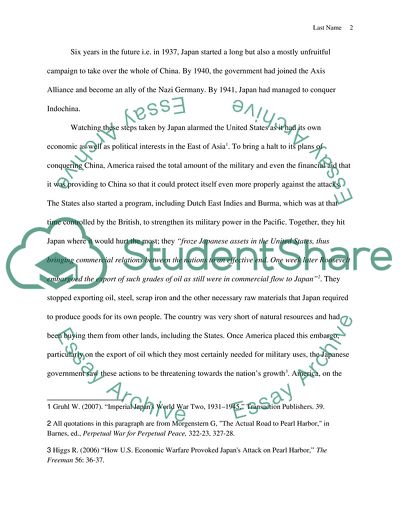Cite this document
(The Japanese Reasoning for the Attack on Pearl Harbor Report Example | Topics and Well Written Essays - 2000 words - 1, n.d.)
The Japanese Reasoning for the Attack on Pearl Harbor Report Example | Topics and Well Written Essays - 2000 words - 1. https://studentshare.org/history/1801174-the-japanese-reasoning-for-the-attack-on-pearl-harbor
The Japanese Reasoning for the Attack on Pearl Harbor Report Example | Topics and Well Written Essays - 2000 words - 1. https://studentshare.org/history/1801174-the-japanese-reasoning-for-the-attack-on-pearl-harbor
(The Japanese Reasoning for the Attack on Pearl Harbor Report Example | Topics and Well Written Essays - 2000 Words - 1)
The Japanese Reasoning for the Attack on Pearl Harbor Report Example | Topics and Well Written Essays - 2000 Words - 1. https://studentshare.org/history/1801174-the-japanese-reasoning-for-the-attack-on-pearl-harbor.
The Japanese Reasoning for the Attack on Pearl Harbor Report Example | Topics and Well Written Essays - 2000 Words - 1. https://studentshare.org/history/1801174-the-japanese-reasoning-for-the-attack-on-pearl-harbor.
“The Japanese Reasoning for the Attack on Pearl Harbor Report Example | Topics and Well Written Essays - 2000 Words - 1”. https://studentshare.org/history/1801174-the-japanese-reasoning-for-the-attack-on-pearl-harbor.


